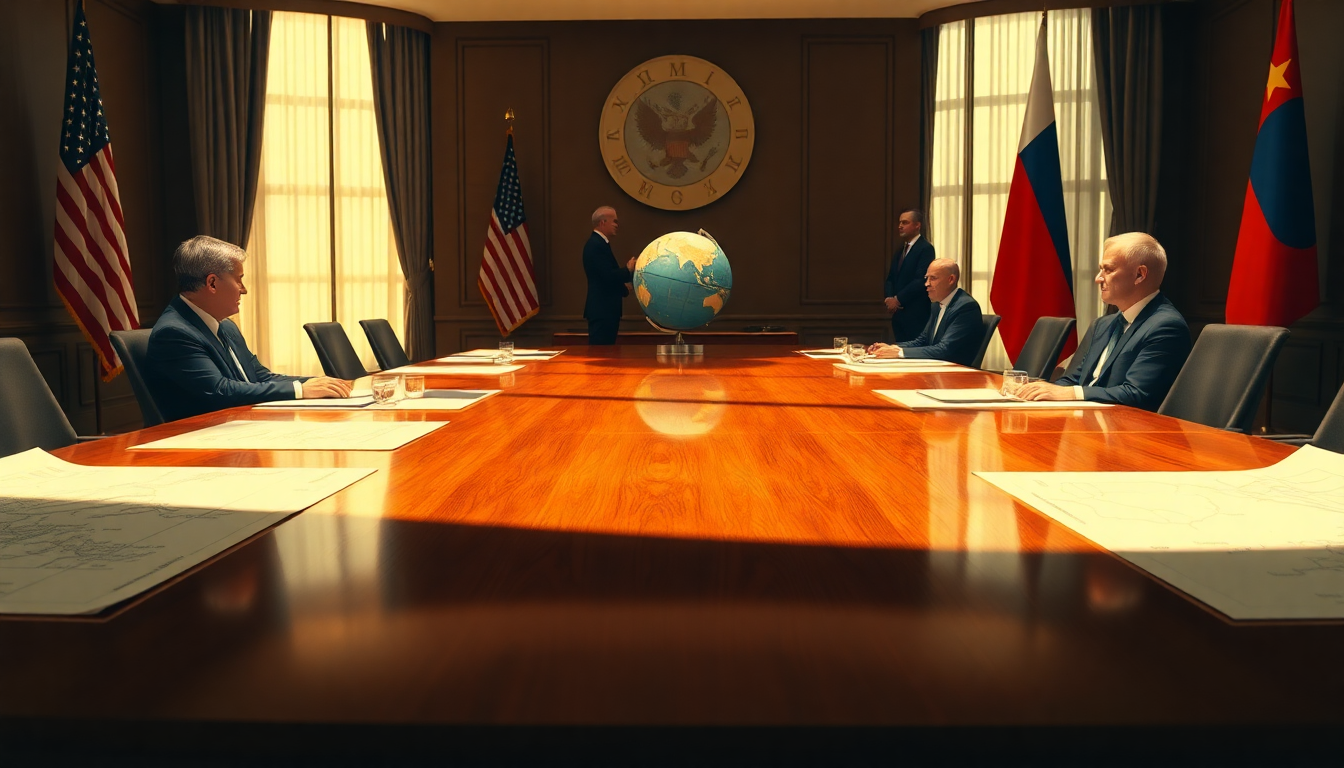Table of Contents
In today’s world of international relations, the relationship between the United States and Russia remains a hot topic in geopolitical discussions. Recent meetings between key diplomats from both countries have unveiled a complex mix of challenges and potential opportunities, especially regarding the ongoing conflict in Ukraine. As tensions ebb and flow, understanding these interactions is essential for grasping their wider implications for global stability. How do these discussions impact not just the involved nations, but the entire world?
Recent Diplomatic Engagements
At the recent ASEAN foreign ministers’ meeting in Kuala Lumpur, Russian Foreign Minister Sergey Lavrov and U.S. Secretary of State Marco Rubio engaged in talks that, while lacking concrete results, indicate a willingness to seek new paths toward peace in Ukraine. Their discussions followed a significant 50-minute meeting the day before, underscoring the urgency of the situation. Could this be a sign of a shift in their approach?
Rubio hinted at the possibility of a ‘new and different approach’ to reviving peace efforts, suggesting a readiness for dialogue that might have stalled in earlier months. However, he was careful to manage expectations, noting that these discussions don’t promise immediate solutions. Lavrov, on the other hand, reaffirmed Russia’s position on the conflict, echoing points made by President Vladimir Putin in past communications, indicating that Russia’s stance on the war remains unwavering.
The Russian Foreign Ministry described the talks as a ‘substantive and frank exchange’ of views, not only focusing on Ukraine but also touching on other global issues like Iran and Syria. This multifaceted dialogue showcases the complexity of U.S.-Russia relations, which often intertwine with various global crises. How do these discussions influence the international stage beyond their borders?
Current Tensions and Future Prospects
Despite a seemingly open line of communication, the backdrop of these discussions is laden with tension. Russian officials acknowledge the unpredictable nature of U.S. policy, yet assert that the ‘positive trend’ in relations may not be as fleeting as it seems. Deputy Foreign Minister Sergey Ryabkov expressed cautious optimism about the potential for further talks on unresolved bilateral issues before summer wraps up, showing a glimmer of hope amid an otherwise challenging diplomatic landscape.
Rubio’s comments after the meetings highlight an essential aspect of diplomacy: the importance of dialogue itself. Both sides seem to understand that keeping the conversation going is crucial, even if the path ahead is still murky. The Secretary of State’s simultaneous engagements with other regional powers, including China, add another layer of complexity to the geopolitical chessboard, indicating that U.S. strategy is also about reasserting its presence in Asia as U.S.-China trade relations deteriorate.
As the U.S. gears up to impose new tariffs on several ASEAN nations, including Malaysia, the consequences of its trade policies could ripple through diplomatic relations in the region. Critics argue that these tariffs might undermine the partnerships that the U.S. is trying to strengthen, highlighting the interconnectedness of trade, diplomacy, and international relations. How might these tariffs affect the delicate balance of power in the region?
Implications for Global Stability
The ongoing discussions between the U.S. and Russia regarding Ukraine and other geopolitical issues serve as a reminder of the fragile balance of global diplomacy. As both nations navigate their interests, the chances for miscommunication or misinterpretation loom large. Observers are left questioning how these interactions will shape the future of international relations, especially concerning conflict resolution and cooperative security.
Ultimately, the willingness to engage in dialogue is a crucial first step toward tackling the numerous challenges that characterize U.S.-Russia relations. However, the success of these efforts will heavily depend on the actions that follow. The diplomatic landscape is ever-evolving, and the stakes are high as the world watches closely. Are we on the brink of a breakthrough, or are we simply witnessing a temporary lull in tensions?


